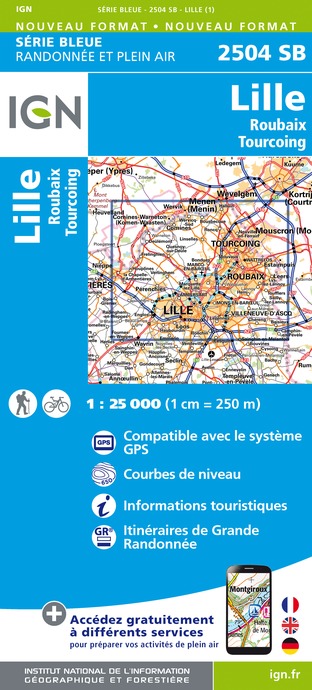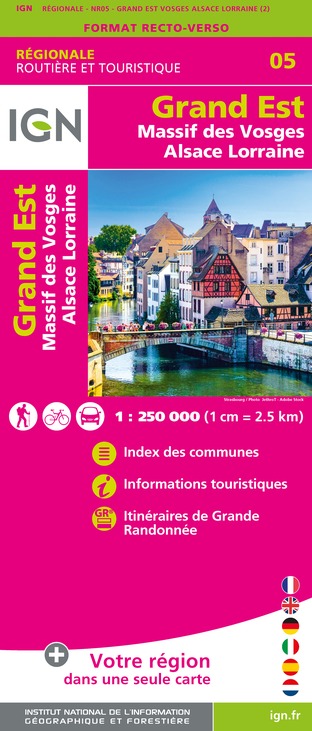Alert
Alerts
Type of practice
Walking
Presentation
Map
Points of interest
Cirkwi brief's
Ratings and reviews
See around
Belgium comes to Lille

The Cirkwi brief
Explore Lille's Architectural Marvels on a Belgian Twist
Embarking on this unique journey through Lille under the recommendation of the Lille Tourism Office brings a special treat. Discovering the architectural splendor that intertwines with the Belgian heritage of its namesake city across the border, this itinerary invites travelers for a stroll filled with enlightenment and awe. The administrative city building serves as a striking starting point, promising a blend of history and modern architecture, embodying both the post-war reconstruction efforts and the evolving skyline of Lille. This route, not just a walk but a historical immersion, beckons with the allure of uncovering the unexpected connections between Lille and Belgium.
Essential Route Details Revealed
Diving into the technical specifics, the route stretches over roughly 2.5 km, transitioning from an altitude of 28 meters down to 15 meters. Interestingly, the journey entails a slight negative elevation change of -10 meters, marking an easy stroll across the city's varying elevations. The Lille administrative building, standing tall since the mid-20th century, marks a significant starting point. This technical breakdown presents a clear cut, accessible path for virtually all ages and fitness levels, offering insights into planning an effortlessly enjoyable experience across Lille's historic and modern architectural marvels.
Seasonal Tips for the Perfect Visit
Regardless of the season, Lille’s intriguing path from the administrative building is a delight. However, spring and autumn offer mild temperatures and colorful backdrops, ideal for this walking excursion. In summer, early mornings or late afternoons are preferable, avoiding the midday sun. Winters, albeit chilly, offer a unique charm, especially during the Christmas market season. Comfortable footwear is a must as the route, despite being technically easy, involves a good amount of walking. Keep an eye on weather forecasts to dodge any rain showers that might dampen the experience.
Historical Significance of Lille
Lille, a city rich with historical layers, seamlessly integrates France and Belgium's shared heritage. Located at the heart of Europe, its strategic significance through centuries manifested in cultural exchanges, wars, and eventually, industrial prominence. The Administrative City building, a post-war project, symbolizes Lille's rebirth and resilient spirit. The city's architecture narrates tales of Flemish influence, French sovereignty, and modern adaptation, making Lille a fascinating chronicle of resilience, culture, and architectural diversity worth exploring.
Lille’s Climate Insights for Visitors
Lille's climate, defined by mild summers and chilly winters, is typical of the Nord-Pas-de-Calais region. Average temperatures range from lows of 1°C in winter to highs of 24°C in summer, with occasional fluctuations. Rainfall is distributed throughout the year, with late spring and autumn experiencing the most pleasant weather conditions for walking tours. This suggests the perfect periods for visiting are late April to early June and September to October when the weather balances warmth and minimal rain, offering the most comfortable conditions for exploring Lille's historical and architectural treasures.
Embarking on this unique journey through Lille under the recommendation of the Lille Tourism Office brings a special treat. Discovering the architectural splendor that intertwines with the Belgian heritage of its namesake city across the border, this itinerary invites travelers for a stroll filled with enlightenment and awe. The administrative city building serves as a striking starting point, promising a blend of history and modern architecture, embodying both the post-war reconstruction efforts and the evolving skyline of Lille. This route, not just a walk but a historical immersion, beckons with the allure of uncovering the unexpected connections between Lille and Belgium.
Essential Route Details Revealed
Diving into the technical specifics, the route stretches over roughly 2.5 km, transitioning from an altitude of 28 meters down to 15 meters. Interestingly, the journey entails a slight negative elevation change of -10 meters, marking an easy stroll across the city's varying elevations. The Lille administrative building, standing tall since the mid-20th century, marks a significant starting point. This technical breakdown presents a clear cut, accessible path for virtually all ages and fitness levels, offering insights into planning an effortlessly enjoyable experience across Lille's historic and modern architectural marvels.
Seasonal Tips for the Perfect Visit
Regardless of the season, Lille’s intriguing path from the administrative building is a delight. However, spring and autumn offer mild temperatures and colorful backdrops, ideal for this walking excursion. In summer, early mornings or late afternoons are preferable, avoiding the midday sun. Winters, albeit chilly, offer a unique charm, especially during the Christmas market season. Comfortable footwear is a must as the route, despite being technically easy, involves a good amount of walking. Keep an eye on weather forecasts to dodge any rain showers that might dampen the experience.
Historical Significance of Lille
Lille, a city rich with historical layers, seamlessly integrates France and Belgium's shared heritage. Located at the heart of Europe, its strategic significance through centuries manifested in cultural exchanges, wars, and eventually, industrial prominence. The Administrative City building, a post-war project, symbolizes Lille's rebirth and resilient spirit. The city's architecture narrates tales of Flemish influence, French sovereignty, and modern adaptation, making Lille a fascinating chronicle of resilience, culture, and architectural diversity worth exploring.
Lille’s Climate Insights for Visitors
Lille's climate, defined by mild summers and chilly winters, is typical of the Nord-Pas-de-Calais region. Average temperatures range from lows of 1°C in winter to highs of 24°C in summer, with occasional fluctuations. Rainfall is distributed throughout the year, with late spring and autumn experiencing the most pleasant weather conditions for walking tours. This suggests the perfect periods for visiting are late April to early June and September to October when the weather balances warmth and minimal rain, offering the most comfortable conditions for exploring Lille's historical and architectural treasures.
Automatically generated.
IGN cards

2504SB - LILLE ROUBAIX TOURCOING
Editor : IGN
Collection : TOP 25 ET SÉRIE BLEUE
Scale : 1:25 000
13.90€

102 LILLE MAUBEUGE PNR SCARPE ESCAUT PNR DE L'AVESNOIS
Editor : IGN
Collection : TOP 100
Scale : 1:100 000
8.40€

101 LILLE CALAIS LE TOUQUET-PARIS-PLAGE PNR DES CAPS ET MARAIS D'OPALE
Editor : IGN
Collection : TOP 100
Scale : 1:100 000
8.40€

D59-62 NORD PAS-DE-CALAIS
Editor : IGN
Collection : CARTES DÉPARTEMENTALES IGN
Scale : 1:150 000
5.90€

NR01 HAUTS-DE-FRANCE
Editor : IGN
Collection : CARTES RÉGIONALES IGN
Scale : 1:250 000
6.80€

NR05 GRAND EST RECTO/VERSO MASSIF DES VOSGES ALSACE LORRAINE
Editor : IGN
Collection : CARTES RÉGIONALES IGN
Scale : 1:250 000
6.80€

NR04 - GRAND EST RECTO/VERSO ARDENNE CHAMPAGNE
Editor : IGN
Collection : CARTES RÉGIONALES IGN
Scale : 1:250 000
6.80€

EUROPE
Editor : IGN
Collection : DÉCOUVERTE DES PAYS DU MONDE IGN
Scale : 1:2 500 000
7.00€

PAYS-BAS BELGIQUE LUXEMBOURG
Editor : IGN
Collection : DÉCOUVERTE DES PAYS DU MONDE IGN
Scale : 1:300 000
7.00€
Technical Information
Walking
Difficulty
Not specified
Dist.
2.5 km
Type of practice
Walking
Show more
Altimetric profile
Starting point
Lat : 50.633711Lng : 3.076141
Points of interest
Data author
Ratings and reviews
To see around











